German anti-aircraft small-caliber anti-Soviet aircraft (part of 3)
Nevertheless, the Germans still had large-caliber machine guns, including those used for air defense purposes. A significant number of heavy anti-aircraft machine guns caliber 13,2-mm was captured in France.
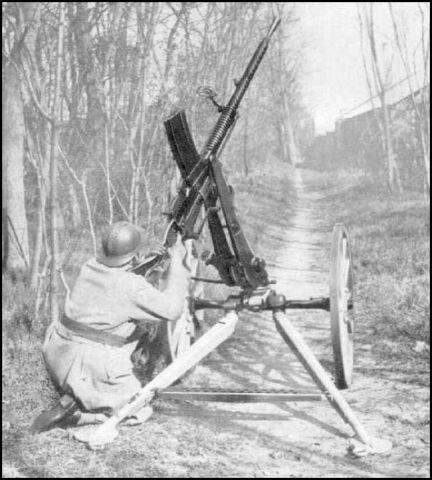
13,2-mm Hotchkiss Mle 1930 machine gun on a wheeled infantry machine in anti-aircraft shooting position
Hotchkiss Мle 1930 machine gun was developed by Hotchkiss based on the experience of the First World under the 13,2 × 99 mm cartridge. The 52 g bullet left the barrel at speeds of 790 m / s, which made it possible to fight low-flying aircraft and light armored vehicles. Automatic machine gun worked on the principle of the gas outlet with a long stroke, located under the barrel of the gas piston. For reliable operation of the automation, depending on the external conditions and the degree of contamination of the weapon, the volume of powder allocated by the gas was changed using a manual regulator. The machine gun had a replaceable barrel of air cooling with a characteristic fins, which became the hallmark of the company Hotchiss. The body of the machine gun weighed about 40 kg, the mass of weapons on the universal tripod machine without cartridges was 98 kg. Rate of fire - 450 rds / min. Ammunition could include ammunition with conventional, incendiary, tracer, armor-piercing-incendiary and armor-piercing tracer bullets.
Heavy machine gun Hotchkiss Мле 1930 officially adopted by the French military in the year 1930. However, initially the pace of production was small, the French military for a long time could not decide how to use it. Although the manufacturer developed a wide range of machine tools and installations - from the simplest infantry to one machine gun, to complex mechanized twin and quad units, large-caliber machine guns were mainly exported. Infantry generals initially refused to use the 1930 Mle as an anti-aircraft gun on the pretext that its heavy bullets could cause damage to their troops if they were dropped. Only in the second half of the 30-x 13,2-mm anti-aircraft guns in significant quantities began to enter the French army. These were mostly single-barreled and paired ZPU on universal tripods.
For powering single-barrel installations, as a rule, rigid tapes-cassettes for 15 cartridges, inserted horizontally into the receiver on the receiver cover, were used. For feeding tape tapes on both sides of the tape receiver, there were folding dust covers, the tape receiver itself was attached to the receiver hingedly and could fold up and forward to clean and maintain the weapon.
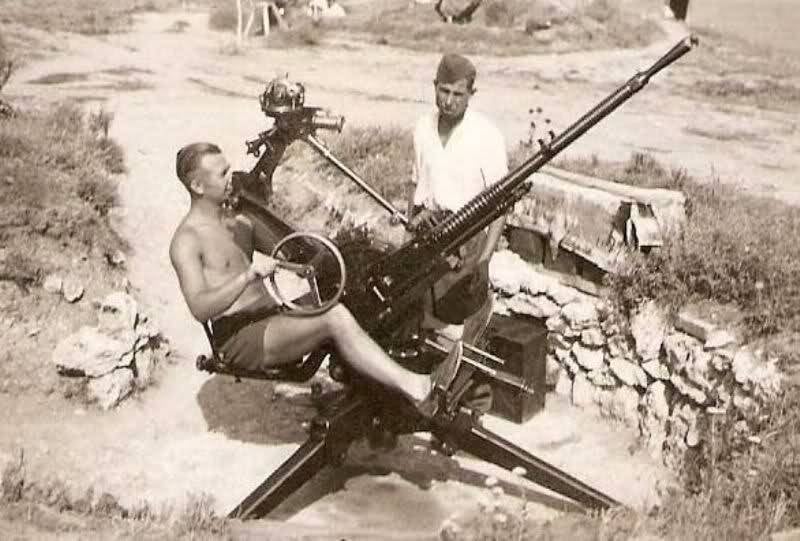
In multi-barreled anti-aircraft systems, detachable box magazines for 30 cartridges were used adjacent to the receiver on top. In the version with the store supply in the design of the machine gun provided a bolt delay, leaving the bolt in the open position after the last cartridge was used up. The slide delay was turned off automatically when a full magazine was attached, while the cartridge was being sent.
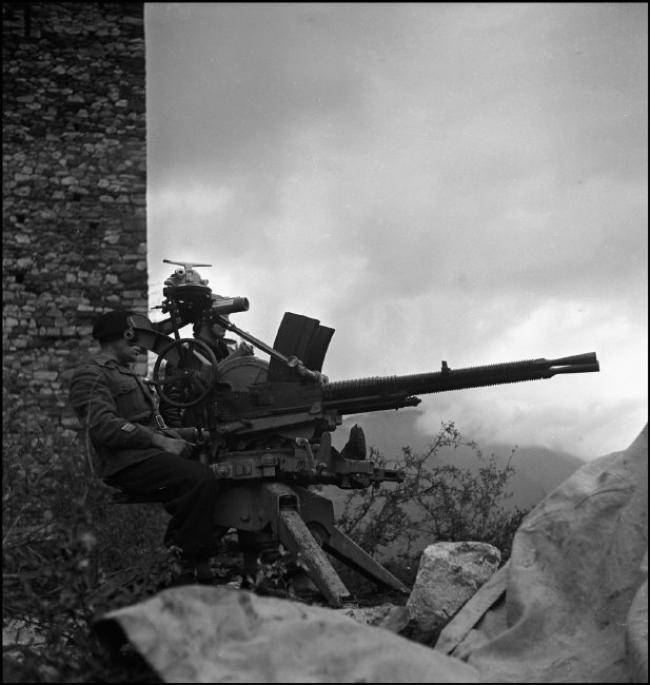
Paired 13,2-mm LSD in firing position, box-shaped stores are clearly visible
Quarter installations were produced in much smaller quantities. They were installed in various vehicles, ships and fixed positions.
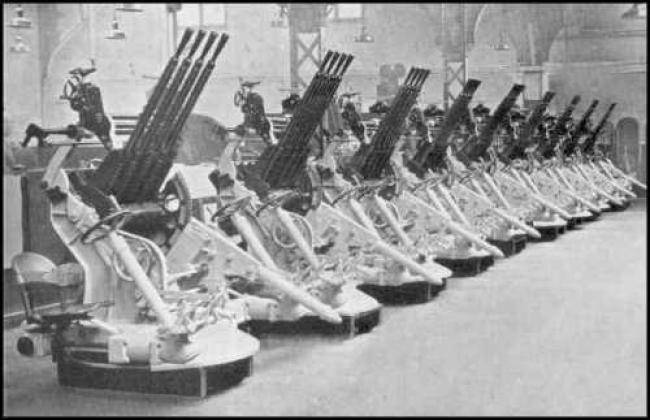
Apparently, the Germans managed to capture a significant amount of 13,2-mm anti-aircraft installations. In any case, the French enterprises under the control of the occupation authorities in 1942, the year was established production of cartridges according to German technology: with a steel sleeve and a bullet with a steel core. This French-German patron was labeled 1.32 cm Pzgr 821 (e). A bullet with muzzle energy 16 640 J. at a meeting angle 30 ° at a distance of 500 meters punched a slab of hardened homogeneous armor 8 mm thick. When hit along the normal, the thickness of the pierced armor increased to 14 mm. Thus, the 13,2-mm bullet could with a high degree of probability penetrate the Il-2 armored corps.
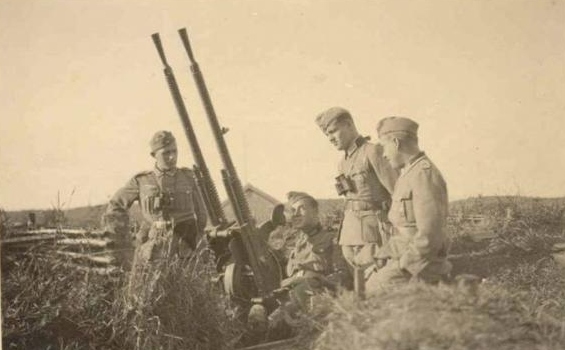
Hotchkiss Mle 1930 machine guns used in Wehrmacht divisions received the designation MG 271 (f). In the anti-aircraft units of the Luftwaffe, they were known as 1,32 cm Flak 271 (f). It is not known how many 13,2-mm units hit the Eastern Front, but there is no doubt that these weapons could be quite effective against low-altitude aerial targets.
In the mid-30s, the leadership of the Luftwaffe issued the leading German arms firms a terms of reference for the development of high-power aircraft weapons. Since rifle-caliber machine guns have practically exhausted their potential and could not ensure reliable destruction of large all-metal aircraft, the designers began to create rapid-fire large-caliber 13-15 mm machine guns and 20-30 mm aviation guns.
In the first half of 1938, the concern Rheinmetall AG began testing the MG.131 aviation machine gun chambered for 13x64 mm. Since this cartridge was the weakest in its class, under it managed to create a large-caliber machine gun with a record low weight and dimensions. The weight of the turret machine gun without ammunition was 16,6 kg, and the length of 1168 mm. For comparison: the mass of the Soviet 12,7-mm UBT aviation machine gun exceeded 21 kg with a length of 1400 mm. The German designers managed to create a very compact and light weapon, comparable in weight and size characteristics to aircraft machine guns of rifle caliber. The objective strengths of the MG.131 included the low power of the cartridge, which, in combination with the low mass of the projectile and the low initial speed, limited the range of effective fire. At the same time, the German MG.131 had a good rate of fire for its caliber - up to 950 rds / min.
The ammunition MG.131 included ammunition with different types of bullets: fragmentation, incendiary tracer, armor-piercing tracer, armor-piercing incendiary. Bullet weight was 34-38 g. Initial speed - 710-740 m / s. A characteristic feature of the machine gun ammunition was the presence of a leading belt on the projectiles, which, according to the currently accepted classification, would rank these weapons not as machine guns, but as small-caliber artillery.
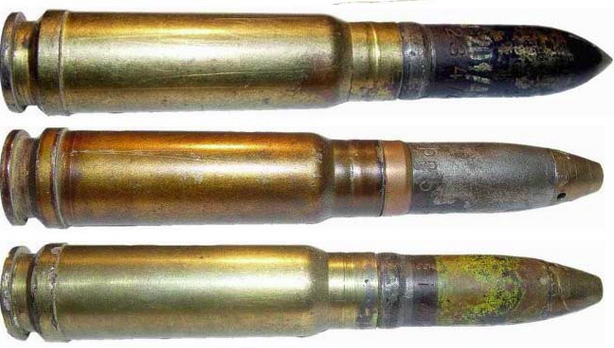
Constructively and according to the principle of operation, MG.131 largely repeated the MG.15 and MG.17 machine guns. Automation 13-mm aviation machine gun worked on the principle of recoil of the short stroke of the barrel. Locking is done by turning the clutch. The barrel was cooled by air flow. In general, with proper care, the MG.131 was a completely reliable weapon and, despite its relatively low power, was popular among German aircrews and gunsmiths. Production of 13-mm aircraft machine guns continued until the second half of the 1944 year, a total of more than 60 000 units were produced. Shortly before the collapse of the Third Reich, the MG.131 warehouses in the warehouses were redone for the needs of the Wehrmacht, and 8132 machine guns were transferred to the ground forces. Large-caliber 13-mm machine guns installed on light machine tools and even bipods. This was possible due to the relatively small mass of weapons for such a caliber and acceptable recoil. However, aimed firing from a bipod was possible only with a queue length of no more than 3 shots.
Most likely, the MG.131 available in the Luftwaffe began to use field airfields to provide air defense long before surplus 13-mm machine guns were handed over to the ground forces. They were installed on the simplest swivels, and they also used regular turrets dismantled from decommissioned bombers. Although MG.131 was often criticized for its insufficient power for such a caliber, 13-mm armor-piercing tracer and armor-piercing incendiary bullets at a distance of 300 m confidently pierced the side 6 mm armor of the Il-2 attack aircraft.
In 1937, Škoda began the production of the 15-mm ZB-60 machine gun. This weapon was originally designed by the Ministry of Defense of Czechoslovakia as an anti-tank, but after being mounted on a universal wheeled-tripod machine, it was possible to fire at air targets. Automatic large-caliber machine gun worked on the principle of use of the removal of the powder gases. The design and operation of the automation was in many respects identical to the machine tool 7,92-mm machine gun ZB-53. The body weight of the 15-mm machine gun without a machine and ammunition was 59 kg.
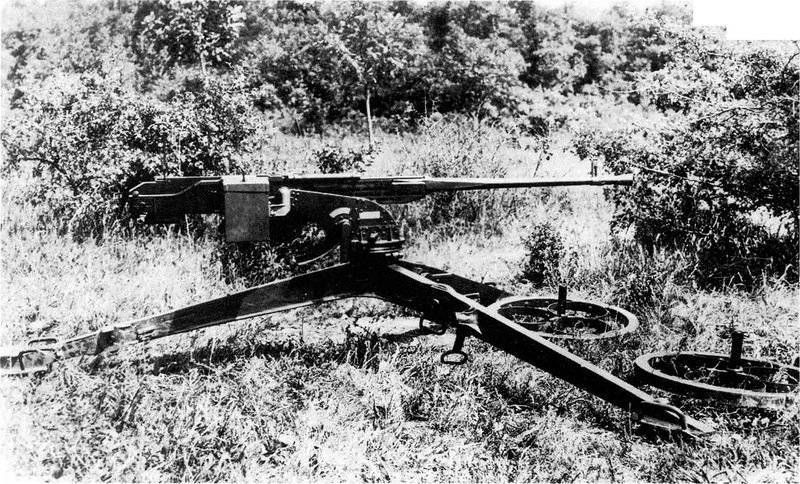
Thanks to the use of powerful ammunition 15 × 104 mm with muzzle energy 33 000 J, the 1400 g bullet in the 75 mm barrel was accelerated to the speed 880 m / s. At a distance of 500 m at a meeting at a right angle, a bullet could penetrate 16 mm armor, which is a fairly high rate even now. To power the machine gun used a box with a tape on 40 cartridges, the rate of fire 430 rds / min. The ammunition consisted of cartridges with armor-piercing and tracer bullets. The pyrotechnic composition of the tracer bullet burned at a distance of up to 2000 m. Due to strong recoil, firing bursts longer than 2-3 with airborne shots was ineffective, which was largely determined by the unsuccessful design of the machine with an excessively high anti-aircraft rack.
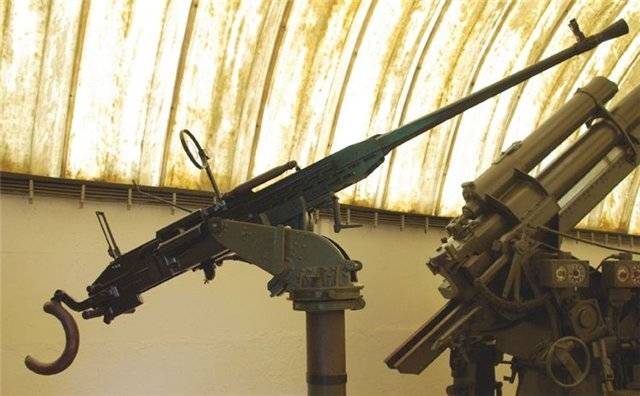
At the end of 30, several hundred ZB-60 machine guns were purchased: Great Britain, Yugoslavia and Greece. In 1938, the British decided to organize the licensed production of ZB-60 under the name Besa Mk.1. In Czechoslovakia itself, the decision on the mass production of 15-mm machine guns after repeated tests and modifications was made only in August of the 1938 year. However, before the German occupation, only a small number of large-caliber machine guns could be produced for their own needs. Several dozen ZB-60 were assembled at the Hermann-Göring-Werke company (as the Germans began to call themselves Škoda plants) under German management. Machine guns used parts of the SS, Luftwaffe anti-aircraft gunners and Kringsmarine. In German documents, this weapon was designated MG.38 (t). The refusal of mass production of 15-mm machine guns was due to their high cost and the desire to free production facilities for weapons developed by German designers. In addition, as already mentioned, the ZB-60 had a not very successful machine, which had a low stability when conducting intensive anti-aircraft fire.
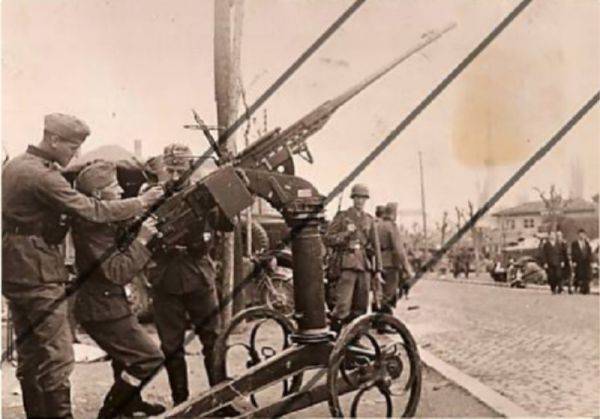
Due to the poor choice of the range of available Czech bullets and their relatively low armor penetration, the Germans used the same bullets as for the MG.15 / 151 aircraft machine guns to equip 15-mm cartridges. This approach also made it possible, thanks to partial unification, to reduce costs in the production of ammunition. Since these German 15-mm bullets had a leading belt, they were structurally shells. German specialists for placing the projectile in the chamber of the machine gun shortened the Czech cartridge case to the width of this belt (3 mm), as a result, the length of the cartridge case of the converted ammunition was 101 mm.
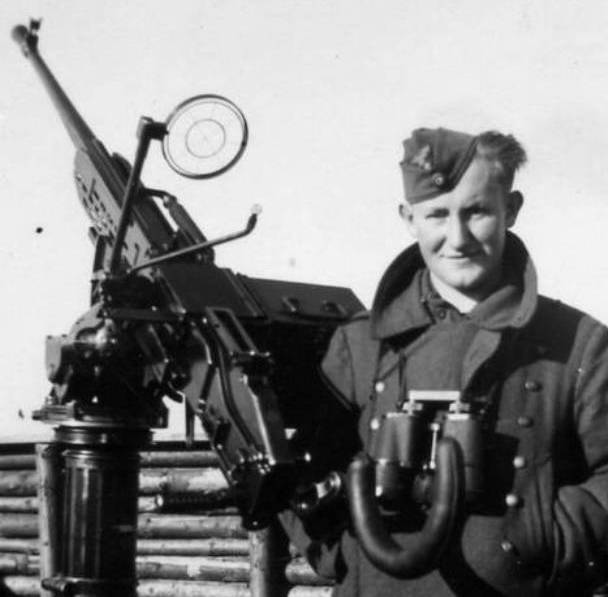
Although a little ZB-60 machine guns were produced during the years of the German occupation of Czechoslovakia, a significant number of photographs of German soldiers posing with these weapons remained. Apparently, the Hitlerites also had British 15-mm machine guns Vesa Mk.1, captured after the emergency evacuation of British troops from Dunkirk, as well as trophy Yugoslav and Greek 15-mm machine guns.
As for the already-mentioned 15-mm MG.151 / 15 aviation machine gun, it was also used to create an LSD. History the use of this weapon as part of anti-aircraft machine-gun systems is very interesting. Aviation 15-mm machine gun design was started by the specialists of Mauser-Werke AG in 1936 year, when it became clear that 7,92-mm aviation machine guns are not able to guarantee the destruction of new all-metal aircraft.
The action of the automatic 15-mm aviation machine gun was based on the use of recoil of the rolling barrel, which is firmly linked to the bolt during the shot. In this case, when fired back rolls the barrel with the shutter. This scheme ensures that the liner is fully pressed against the walls of the chamber until the projectile is released from the barrel. This makes it possible to increase the pressure in the barrel and provides a higher initial speed compared with a free-gate weapon. The MG 151 / 15 uses recoil with a short barrel stroke that is smaller than the shutter stroke. Locking the barrel by turning the battle larvae. Sliding type feed mechanism.

Simultaneously with the creation of weapons for it, the development of ammunition was carried out: with fragmentation, incendiary tracer, armor-piercing tracer and sub-caliber armor-piercing with a carbide (tungsten carbide) core bullets. The bullets adopted for the 15x95 mm shot were, in fact, projectiles, since they had a leading belt characteristic of artillery shells.
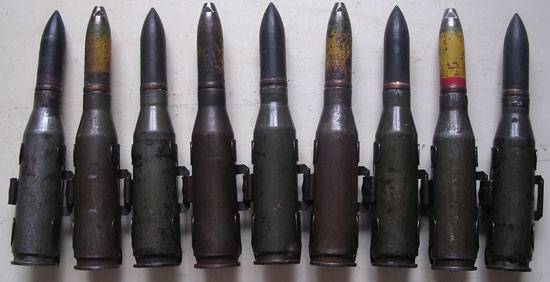
The armor piercing tracer with 72 g mass had an initial speed of 850 m / s. At a distance of 300 m, she normalized confidently pierced 20 mm medium armor. Sub-caliber bullet with a hard-alloy core possessed even greater armor penetration. Leaving the barrel at a speed of 1030 m / s, a bullet weighing 52 g at the same distance could penetrate 40 mm armor. However, in view of the acute shortage of tungsten, cartridges with sub-caliber bullets for firing at air targets were purposefully not used.
The serial production of the MG 151 / 15 large-caliber machine gun began in the 1940 year. Thanks to the use of successful design solutions, it had characteristics that were high for its time, which, along with well-developed 15-mm cartridges, ensured its confident superiority over other samples of German aircraft armament in initial projectile speed and armor-piercing action. With a machine gun body weight of about 43 kg, it had a total length of 1916 mm. Rate of fire - up to 750 rds / min.
However, with sufficiently high rates of fire rate and armor penetration, as well as good accuracy, the 15-mm machine gun in the Luftwaffe was not used for long. This was due to the insufficient destructive effect of its explosive ammunition on the heavy bombers' power structures. On the Soviet-German front, the BF-109F-2 fighters, armed with MG 151 / 15, successfully hit all types of Soviet single-engine combat aircraft, including armored IL-2, as well as twin-engine Pe-2, at actual air combat distances. However, attempts to intercept a four-engined British bombers demonstrated the lack of effectiveness of the 15-mm machine gun. In this regard, in 1941, the company Mauser-Werke AG based on the MG 151 / 15 machine gun created the 20-mm MG 151 / 20 cannon, which was widely used as the main armament of fighters of various modifications, and the 15-mm aeronautical machine guns were used to create anti-aircraft installations.
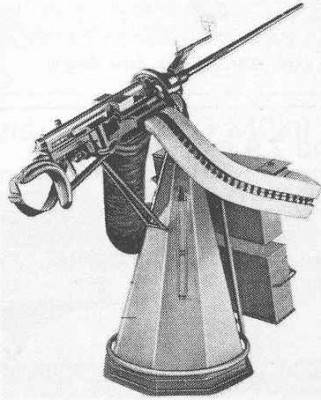
Initially, MG 151 / 15 was used to create a single installation. However, this option is not widespread. The most popular was the built-in ZPU on the Flalaf.SL151.D machine, installed on the 1510 / V pedestals. Tumbling anti-aircraft systems were located both in stationary positions and on towed trailers.
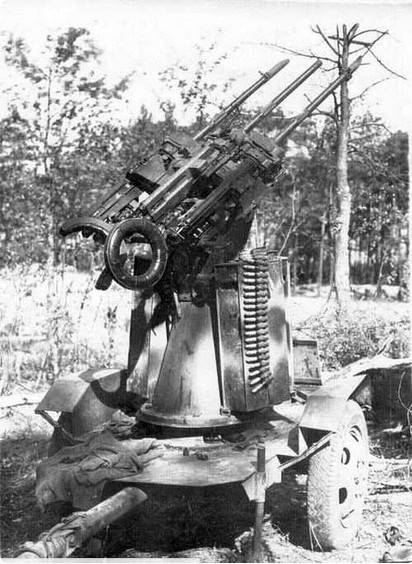
At the same time, the installation possessed a solid ammunition, in the boxes fixed parallel to the cabinet, a total of at least 300 cartridges were placed. All three trunks had a general descent. The total rate of the three-barreled installation reached 2250 rds / min, that is, a second salvo of three 15-mm machine guns was 0,65 kg.
The installation, built with the use of aircraft machine guns little adapted for use on the ground, required careful maintenance and often gave up with heavy dusting. Also, for aiming three trunks at the target, the shooter needed to make considerable physical efforts, which adversely affected the accuracy of firing at rapidly moving targets. Nevertheless, 15-mm anti-aircraft machine guns were quite a formidable weapon. Due to the high initial velocity of the bullet, the range of aimed fire was 2000 m, and the armor penetration allowed to overcome with confidence any aviation armor that existed at that time. Thus, during special tests of single-seat IL-2 armor conducted at plant 125 in summer 1942 of the year when shelling from a German heavy machine gun MG-151 / 15, it was found that side armored plates 6 mm thick do not provide protection against 15 armor-piercing mm. from distances less than 400 m at an angle to the longitudinal axis of the aircraft over 20 °.
With regard to foreign models, the most common anti-aircraft heavy machine gun used by the Wehrmacht on the Eastern Front was the Soviet 12,7-mm DShK.
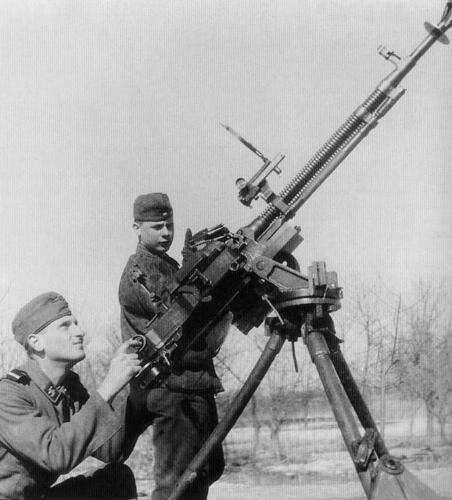
Although during the Great Patriotic War there was an acute shortage of large-caliber machine guns in the Red Army, and by May 1945 only about 9000 units had been fired, the enemy managed to capture some number of serviceable DShKs. The Germans very quickly appreciated the Soviet heavy machine gun and adopted it, giving it the designation MG.286 (r). This weapon was used by the SS, Wehrmacht and Luftwaffe airfield units.
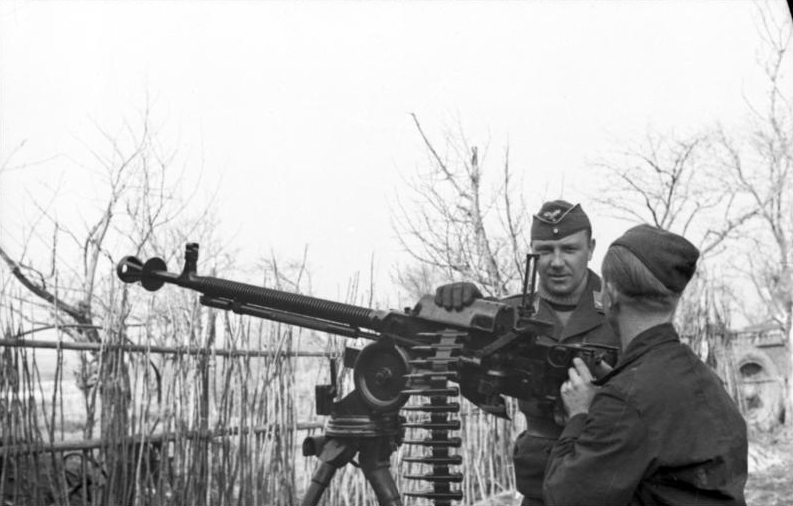
The DShK machine gun on the universal wheel-tripod machine Kolesnikov with a mass of about 158 kg had the opportunity to conduct effective fire at air targets at a distance of up to 1500 m. The rate of fire was 550-600 rds / min. At a distance of 100 m, an armor-piercing incendiary bullet with a steel core weighing 48,3 g, leaving the barrel at a speed of 840 m / s, penetrates steel armor of high hardness 15 mm thick. High armor penetration in combination with a satisfactory combat rate of fire and reach in range and height made captured 12,7-mm machine guns very dangerous for our attack aircraft. For a complex of service and operational and combat characteristics captured DShK were the most advanced large-caliber machine guns used by the German army on the Soviet-German front.
Продолжение следует ...
Based on:
https://borianm.livejournal.com/760865.html
http://wwii.space/zenitnyie-orudiya-frantsiya/
http://sudwall.superforum.fr/t2458-mitrailleuse-aa-de-132-mm
http://alternathistory.com/neletayushhie-frantsuzskie-aviapushki-gochkiss-i-ko/
https://alternathistory.livejournal.com/367014.html
https://mensby.com/technology/guns/5633-soviet-heavy-machine-gun-dsk
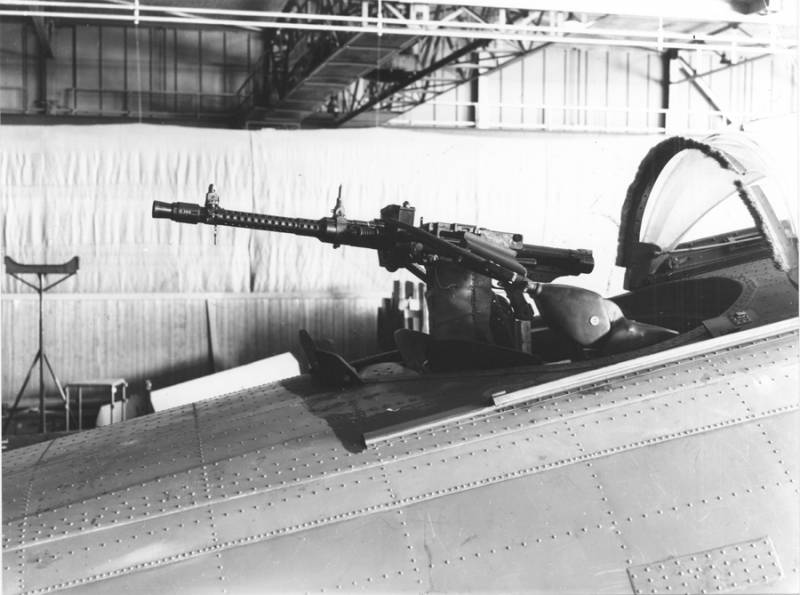
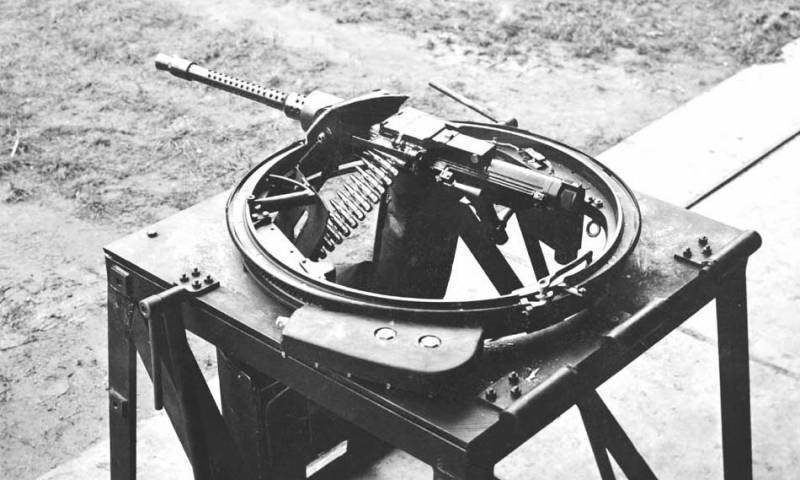
Information